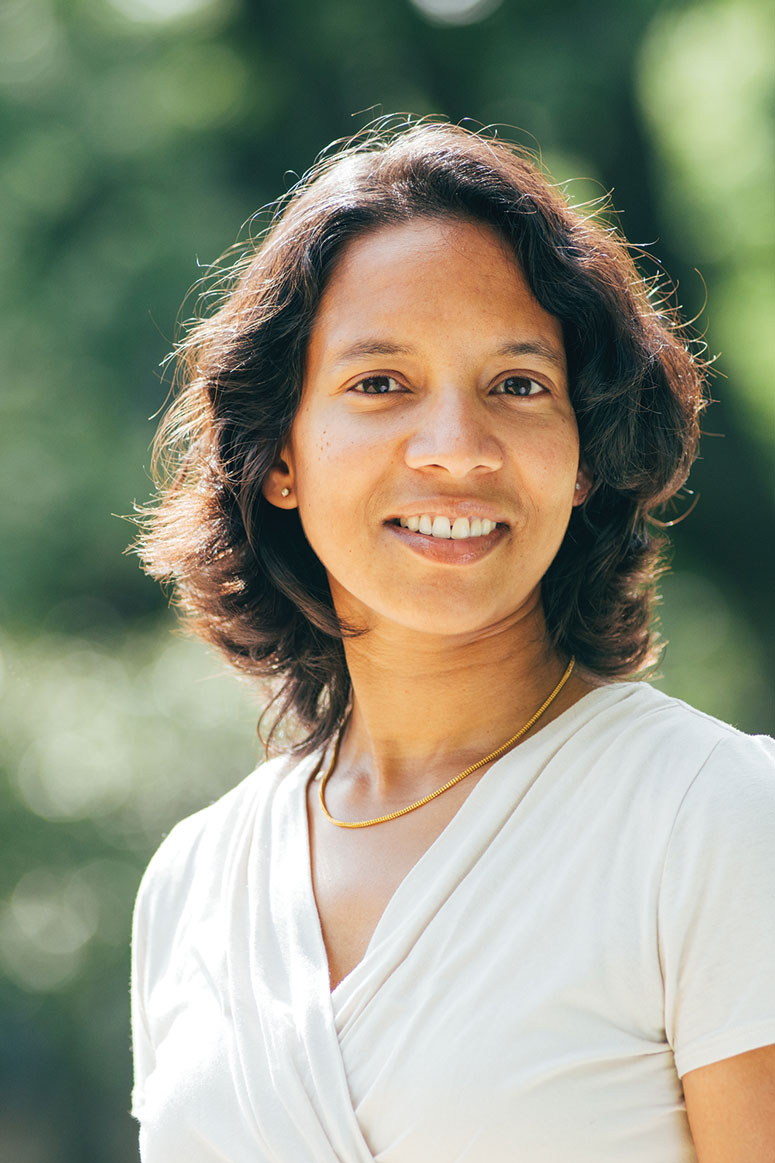Look skyward on a winter’s night in the Northern Hemisphere and you may glimpse the beauty of the aurora borealis. Come sunrise, the same forces that spur its shimmering bands will likely wreak havoc with communication systems and GPS navigation.
Each time the sun beams a solar flare or lobs a coronal mass ejection (CME) toward our planet, a surge of charged particles strips electrons from gases in our atmosphere, resulting in the familiar glow and also dense plasma masses that refract, or delay, satellite signals.

Photo by: Bonnie Robinson
Predicting where this plasma will travel remains one of the challenges of space weather forecasting. Now, with the help of a National Science Foundation CAREER Award, Seebany Datta-Barua, assistant professor of aerospace engineering, hopes to shift the science closer to becoming as accurate as meteorologists' storm tracking.
“Say there is a CME headed toward Earth. It strikes our magnetosphere and some of the particles get rerouted into Earth's upper atmosphere. Where will those particles go? It would be helpful if we could forecast whether they will be mostly visible over Australia or the U.S., or not affect anyone at all,” Datta-Barua says. “It would allow airlines and electric-power suppliers to plan for it and take appropriate action.”
Datta-Barua will use mathematical modeling of the plasma densities to detect something called Lagrangian coherent structures (LCS), which can help scientists predict where—and how quickly—particles will move from one location to another.
LCS have been used successfully to model the movement of pollutants in the ocean. If Datta-Barua can detect their presence in the atmosphere, she can use them to model where the plasma will gather over our planet following a solar event.
“The idea is to pretend you're following one particle in the flow through time, and then you follow another particle nearby to see how far they separate over time. Do that for a lot of neighboring points and a pattern emerges where some particles start off close together and then diverge quickly. Yet in another region, they stay close,” Datta-Barua says. “An LCS is like a wall that divides the particles that separated most rapidly. It defines a barrier that tells us something like, ‘Two particles that start on either side of this barrier will go far apart from each other after five hours.’”
The entire dance plays out in the ionosphere, an ever-shifting layer of charged particles within the thermosphere, which has interested Datta-Barua since her days as an undergraduate studying physics at Stanford University. While doing undergraduate research, she found her interest shifting from fundamental physics to a desire to pursue science that directly affects people's daily lives. So, along with a bachelor's degree in physics, Datta-Barua went on to earn a master's degree and doctorate in aeronautics and astronautics, and participated in the GPS Research Laboratory run by Stanford Professor Per Enge.
“Aerospace engineering and working with the near-space environment—satellites and all the technologies that rely on them like communications, navigation, and remote sensing—was where I thought it all really connects to modern society,” she says.
Although Datta-Barua admits it may be years before we can forecast space weather the way meteorologists track winter storms, the quest still shimmers on the horizon, brilliant as the northern lights.
More Online
Seebany Datta-Barua’s homepage: engineering.iit.edu/faculty/seebany-datta-barua
“The Skeleton of Water,” on Lagrangian coherent structures: www.economist.com/science-and-technology/2009/11/12/the-skeleton-of-water